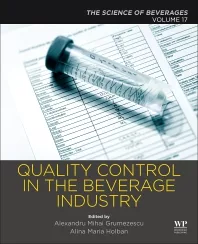CGA, NielsenIQ identify what’s new, next in beverage alcohol
Webinar highlights 10 trends impacting the market
How have beer, wine and spirits performed in 2022, and what’s coming down the road in 2023? NielsenIQ experts Drew Hummel and Jon Berg shared the latest insights at a special beverage alcohol industry webinar: “What’s now and what’s next?,” a beverage alcohol industry webinar.
The following are 10 key takeaways they highlighted:
BevAl is a $198 billion business
NielsenIQ’s research values the total beverage alcohol market for the year to August 2022 at $198 billion. That’s split 55% to 45% between the on-premise and off-premise, and represents strong growth of 14% from the previous 12 months. BeverageTrak shows velocity has run ahead of the past three years in nearly every week this year, though ticket count is down 3% on 2021. Outlet numbers have risen slightly, to a total of around 240,000 off-premise outlets and 290,000 on-premise venues.
Consumers want experience and exploration
NielsenIQ’s consumer research consistently highlights consumers’ appetite for authentic experiences and exploration when they drink out. They want to discover new flavors and they’re increasingly focused on issues like wellness and sustainability as well. With CGA’s REACH survey showing half (50%) of U.S. on-premise consumers seek drinks in bars and restaurants that are different to what they consume at home, it’s important to understand the motivations of visitors — and CGA’s new on-premise segmentation can help to pinpoint nuances in needs.
Imported beer’s share is up, craft is down
Beer sales totaled $89 billion in the year to August — 15% more than in the previous 12 months. Price increases and promotions mean the beer market is on track for a strong end to the year. Segments that have gained share in the on-premise include imported and domestic premium beers, while craft beer has lost a little of its split.
Hard seltzers reach an equilibrium
After several years of rapid growth, hard seltzers’ share of on-premise sales has stayed steady this year, and it has dropped in the off-premise. This is still a significant part of the market, but some drinkers may now be looking for something new.
RTDs are ready to grow
The ready-to-drink (RTD) segment is still relatively new in the on-premise — only 16% of consumers say they have purchased one recently — but their convenience and hygiene accelerated take-up during COVID-19. Spirits-based cocktails and flavored malt RTDs have both trended well in 2022. But with lots of new products arriving on the market, suppliers will need to innovate to earn their place on crowded shelves. Work is also needed on pricing structures and consumer education.
New impetus is needed to revive wine
Growth in the wine segment has been much slower than beer at 6%, and it lost a percentage point of total bev al sales in the year to August. In bars and restaurants there have been notable shifts away from whites to reds, though Champagne remains strong for celebratory occasions. In the off-premise we are approaching a make-or-break point, with innovation and education now sorely needed to encourage trial by younger adults. The majority of declines has been driven by wines costing below $15, as value consumers gravitate toward RTDs.
Tequila and premium are powering spirits
Some of wine’s sales have been lost to spirits, which generated 18% dollar growth in the last year. There has been exceptional growth in the on-premise lately, and well over two-thirds (71%) of spirits sales now come here. Tequila has been the star performer with a share that is now only just short of whiskey, while more than two thirds (69%) of total spirits sales are from premium brands. In addition, tequila accounts for nearly a third of on-premise total spirits value in California. CGA’s enhanced OPM methodology allows brands to analyze and track performance across 15 new individual states, exploring the nuances that come with market and channel breaks.
Cocktails continue to flourish
Rum is another spirits standout, thanks in large part to its popularity in the still-thriving cocktail market. BeverageTrak shows the average on-premise outlet generated 17% more cocktail revenue this year than last, and the average price point has reached $12 — a dollar up on last year. Cocktail sales tend to drive higher overall checks as well.
Inflationary pressures are rising
Inflationary pressures and growing household debts are mounting, though Bev Al categories and their consumers are more resilient than most. CGA by NielsenIQ’s OPUS research shows core consumers remain keen to prioritize the on-premise for their spending, and three quarters (76%) say they will spend more or the same money in bars and restaurants in the next three months as they did in the last three — often because they will be enjoying more treats and special occasions. This backs up consumers’ impressions of the on-premise as a place to find affordable luxuries.
There’s headroom in 2023 for sub-premium beer, non-alcohol and more
These treat and celebratory occasions are going to drive more premiumization in 2023. But the market also is likely to see sub-premium beer do well as some drinkers’ disposable incomes are reduced. Other likely growth areas for 2023 include non-alcohol products, big soda and energy drinks and brands that can emphasize functional attributes as well as flavors.
Looking for a reprint of this article?
From high-res PDFs to custom plaques, order your copy today!







